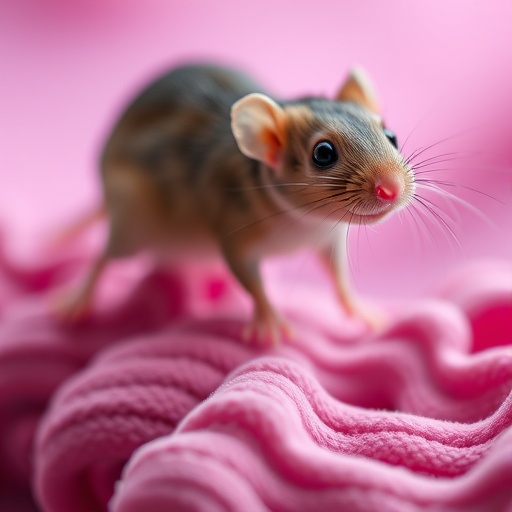In the relentless pursuit to untangle the intricate biology underlying colorectal cancer (CRC), researchers have long grappled with the complexity of its molecular subtypes. In a groundbreaking new study published in Cell Death Discovery, scientists Green, Roccia, and Rufini present a compelling exploration into how murine models can bridge the gap between human colorectal cancer heterogeneity and experimental research. Their work unveils a sophisticated framework that employs mouse models to decode the molecular landscapes of human CRC, propelling the field toward more precise diagnostic and therapeutic strategies.
Colorectal cancer remains one of the most prevalent malignancies worldwide, presenting a wide spectrum of clinical behaviors and treatment responses. This variability is largely attributed to the diverse molecular subtypes that characterize CRC tumors at the genetic and epigenetic levels. However, dissecting these subtypes in human patients is complicated by inter-patient variability and the difficulty of performing mechanistic studies in vivo. Here, the authors argue for the strategic use of murine systems, highlighting how genetically engineered mice can faithfully recapitulate human CRC subtypes to facilitate functional investigations that are otherwise unfeasible.
Central to this research is the concept that modeling the distinct molecular subtypes of human colorectal cancer in mice allows for an unparalleled window into tumor biology. The team outlines how genetically tailored mouse models reflecting specific mutations and gene expression patterns observed in human CRC can simulate tumor initiation, progression, and metastasis in a controlled environment. Such modeling enables scientists to examine cancer cell interactions within the tumor microenvironment, immune involvement, and responses to therapeutic agents with high fidelity.
.adsslot_Qmrti80DJz{ width:728px !important; height:90px !important; }
@media (max-width:1199px) { .adsslot_Qmrti80DJz{ width:468px !important; height:60px !important; } }
@media (max-width:767px) { .adsslot_Qmrti80DJz{ width:320px !important; height:50px !important; } }
ADVERTISEMENT
The authors delve into the nuances of CRC classification, noting that the current consensus identifies at least four consensus molecular subtypes (CMS1 to CMS4), each associated with unique genomic alterations and biological behaviors. By correlating these CMS categories with corresponding mouse models, Green and colleagues establish a roadmap that aligns experimental oncology with clinical classifications. This approach not only enhances the relevance of preclinical studies but also sets the stage for precision medicine strategies tailored to specific molecular subtypes.
One of the standout technical aspects of the study is the integration of advanced genomic and transcriptomic technologies. The researchers employed comprehensive multi-omics analyses to characterize the murine tumors, ensuring they mirror the complexity of human CRC at multiple biological levels. This depth of molecular profiling affords a granular understanding of oncogenic pathways, immune signatures, and stromal interactions, illuminating potential vulnerabilities within each subtype.
Importantly, the authors emphasize the dynamic nature of tumor evolution, illustrating how mouse models can capture the temporal progression of colorectal cancer comorbidities. This temporal aspect is crucial for identifying early molecular events that dictate tumor behavior and for testing interventions that could intercept malignancy before it advances. Such insights pave the way for developing biomarkers for early detection and monitoring.
The role of the tumor microenvironment emerges as a pivotal theme throughout the article. By employing mouse models, the study sheds light on how cancer-associated fibroblasts, immune cells, and extracellular matrix components vary across CRC subtypes and influence tumor growth and therapeutic resistance. Understanding these interactions provides a richer picture of the complex ecology of colorectal tumors and may reveal novel targets for intervention.
Beyond tumor biology, the paper tackles the critical challenge of therapeutic response heterogeneity. The authors demonstrate that specific mouse models representing distinct molecular subtypes exhibit varied sensitivities to chemotherapeutic and immunotherapeutic agents. This finding underscores the necessity of subtype-specific preclinical testing to predict patient outcomes more reliably and to optimize treatment regimens accordingly.
The ethical and practical advantages of mouse model research are also underscored. The feasibility of genetic manipulation in mice offers a level of experimental control impossible in human studies. The ability to induce or knock out particular genes allows for dissecting causal relationships in tumorigenesis and response to treatments, providing foundational knowledge that can be translated back to clinical settings.
Additionally, the study addresses the limitations inherent in current models and proposes innovative strategies to enhance translatability. For instance, the incorporation of patient-derived xenografts and humanized mouse systems aimed at mimicking human immune contexts represents a promising avenue. These hybrid models could bridge the gap between murine research and patient-specific cancer biology even more effectively.
The researchers also note the importance of standardizing molecular subtype definitions and experimental protocols across laboratories to ensure data comparability and reproducibility. Such standardization is vital for consolidating findings and accelerating the collective progress toward subtype-targeted therapies in colorectal cancer.
Interdisciplinary collaboration is presented as a cornerstone of this research. The convergence of molecular biology, genomics, computational modeling, and clinical oncology enables a holistic approach to tackling the complexities of colorectal cancer subtyping. By leveraging these diverse expertise areas, the field advances toward more robust and clinically relevant models.
Importantly, the narrative outlines the transformative potential of this research in personalized oncology. As molecular profiling becomes increasingly integrated into clinical practice, the refined murine models described in this study stand to serve as indispensable platforms for evaluating novel drugs and predicting patient-specific therapeutic responses, reducing the current trial-and-error approach.
The study culminates in envisioning a future where murine models not only elucidate fundamental CRC biology but also drive patient stratification in clinical trials and inform the design of next-generation treatments. This vision aligns with the broader movement toward precision medicine, where treatments are tailored to the genetic and molecular makeup of individual tumors.
In summary, the work by Green, Roccia, and Rufini represents a significant advance in decoding the molecular heterogeneity of human colorectal cancer through the strategic use of mouse models. By bridging the human-mouse research divide, the study offers novel insights and tools that promise to accelerate therapeutic development and improve patient outcomes in one of the most challenging oncological landscapes.
Subject of Research: Molecular subtypes of human colorectal cancer and their modeling using murine systems.
Article Title: Making sense of human colorectal cancer molecular subtypes: mice are stepping in.
Article References:
Green, C., Roccia, P. & Rufini, A. Making sense of human colorectal cancer molecular subtypes: mice are stepping in. Cell Death Discov. 11, 295 (2025). https://doi.org/10.1038/s41420-025-02594-7
Image Credits: AI Generated
DOI: https://doi.org/10.1038/s41420-025-02594-7
Tags: bridging human and animal studiescancer biology advancementscolorectal cancer researchdiagnostic strategies for CRCepigenetic factors in cancerexperimental cancer therapiesfunctional investigations in oncologygenetic engineering in micehuman cancer heterogeneitymolecular subtypes of CRCmurine models in cancer studiesprecision medicine in colorectal cancer





